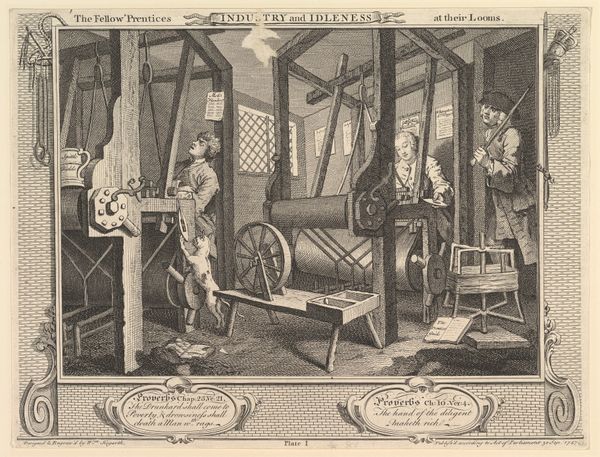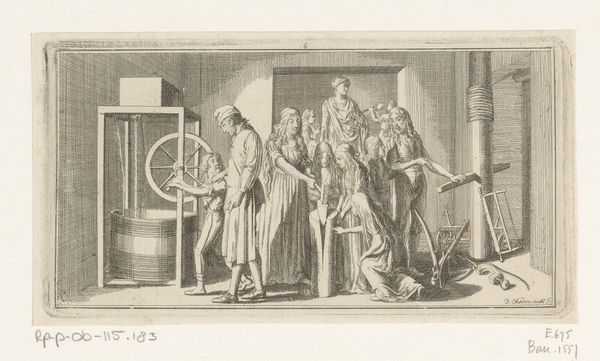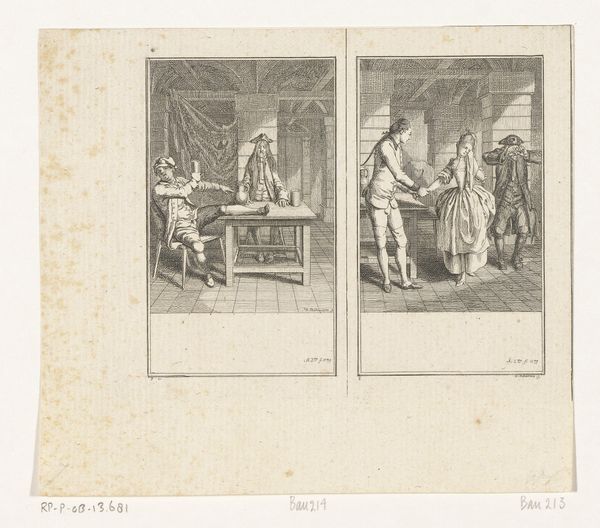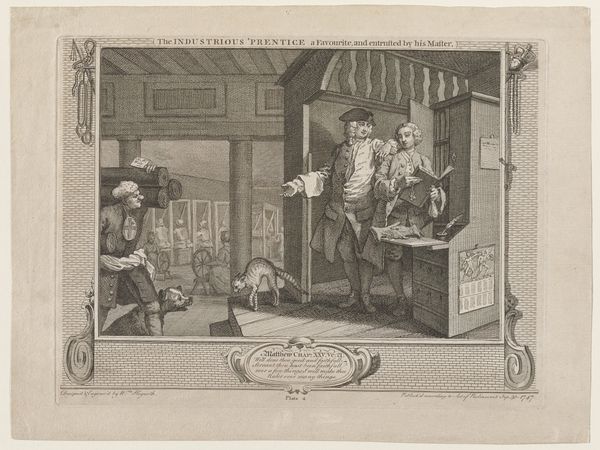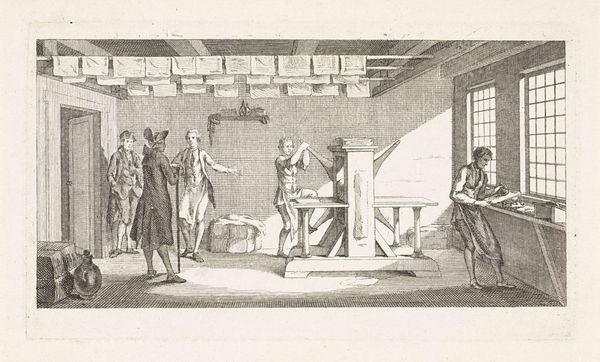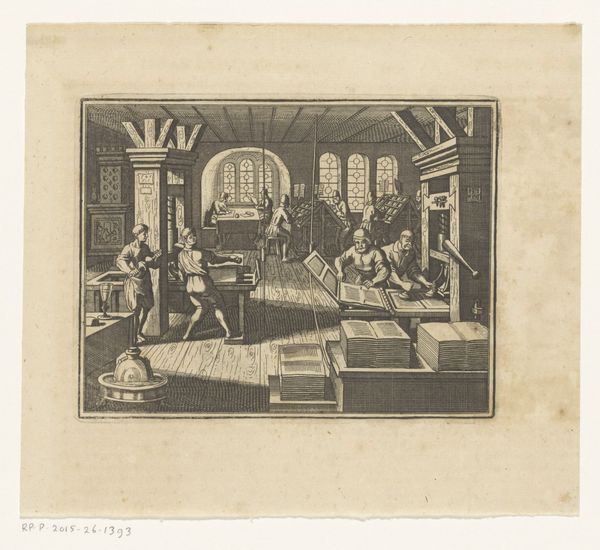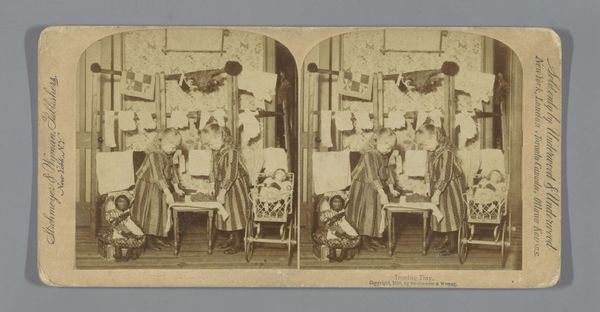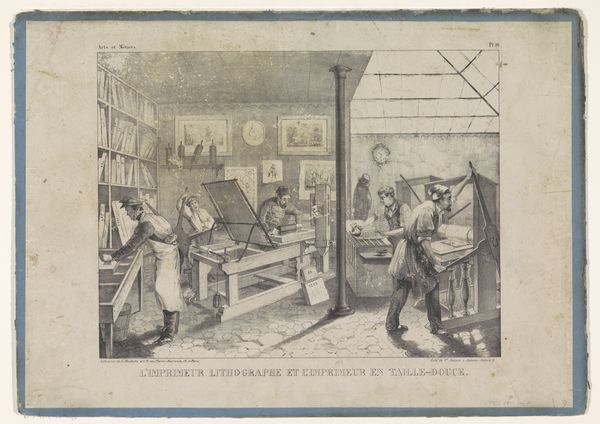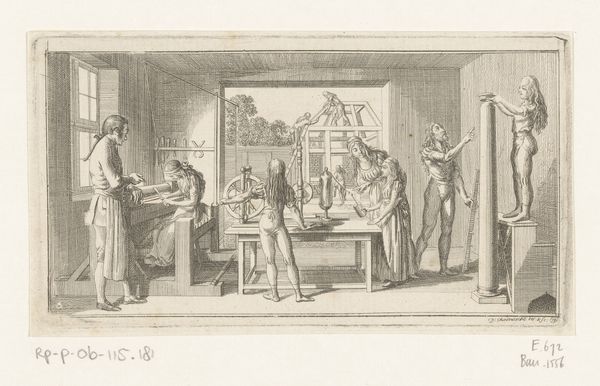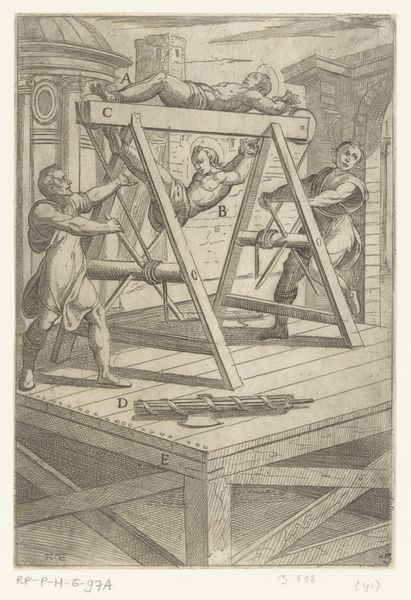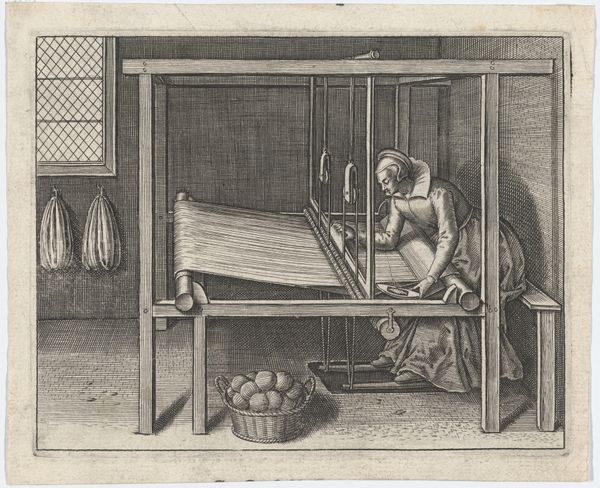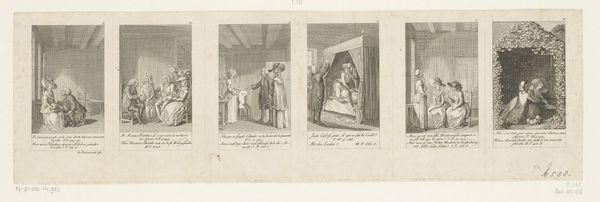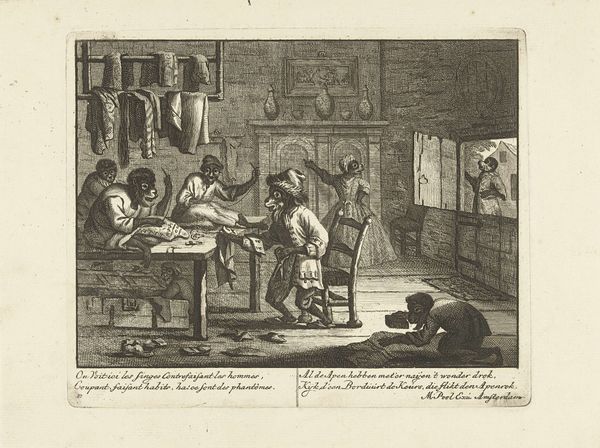
print, etching, engraving
#
narrative-art
#
baroque
# print
#
etching
#
caricature
#
figuration
#
line
#
genre-painting
#
history-painting
#
engraving
Dimensions: 10 3/8 x 13 11/16 in. (26.35 x 34.77 cm) (sheet)
Copyright: Public Domain
Editor: So, this is "The Fellow Prentices at their Looms" by William Hogarth, created in 1747. It's a print, an etching and engraving, divided into two contrasting scenes. It’s stark; I find myself drawn to the narrative split, and how that reflects social commentary, I think? How do you read this split composition? Curator: Indeed, it’s a potent visual commentary. Hogarth utilizes this binary structure – Industry and Idleness - to reflect anxieties within the emerging capitalist society of 18th century England. He questions the Protestant work ethic as key to individual prosperity but also the social mobility dependent on the apprentice system. Do you see any signifiers of class or social status at play? Editor: Definitely! The ‘idle’ apprentice on the left looks like he is in a perpetual state of disrepair. He has rags; his posture is more lackadaisical. While the apprentice on the right…is primmer, well-dressed, and actively working. It looks to suggest diligence pays off…is there perhaps a message against excess embedded there too? Curator: Good observation. Hogarth consistently critiques aristocratic excess, but here his commentary seems leveled more at the working classes and the importance of conforming to societal norms to advance. Where is this being reinforced? How is society being implicated? Editor: It seems that it is inscribed literally: laws, social roles through class status. What else can be observed here, would you say? Curator: Consider the public nature of art in the 18th century. Prints like these were widely circulated, affordable, and acted as visual propaganda in a way. Hogarth aimed to instruct and reform his audience, but what do you make of that from our contemporary perspective? Editor: It's interesting how Hogarth uses this "before and after" setup for social reform – almost didactic, but maybe that's what resonated with audiences back then. A lot more accessible perhaps…I suppose my biggest take away is now thinking about how societal forces continue to shape what’s considered 'good' or 'bad' behavior and the public role of the work itself. Curator: Precisely. This work reminds us of the historical weight behind seemingly simple moral tales and how art, then and now, plays a role in shaping societal values.
Comments
No comments
Be the first to comment and join the conversation on the ultimate creative platform.
